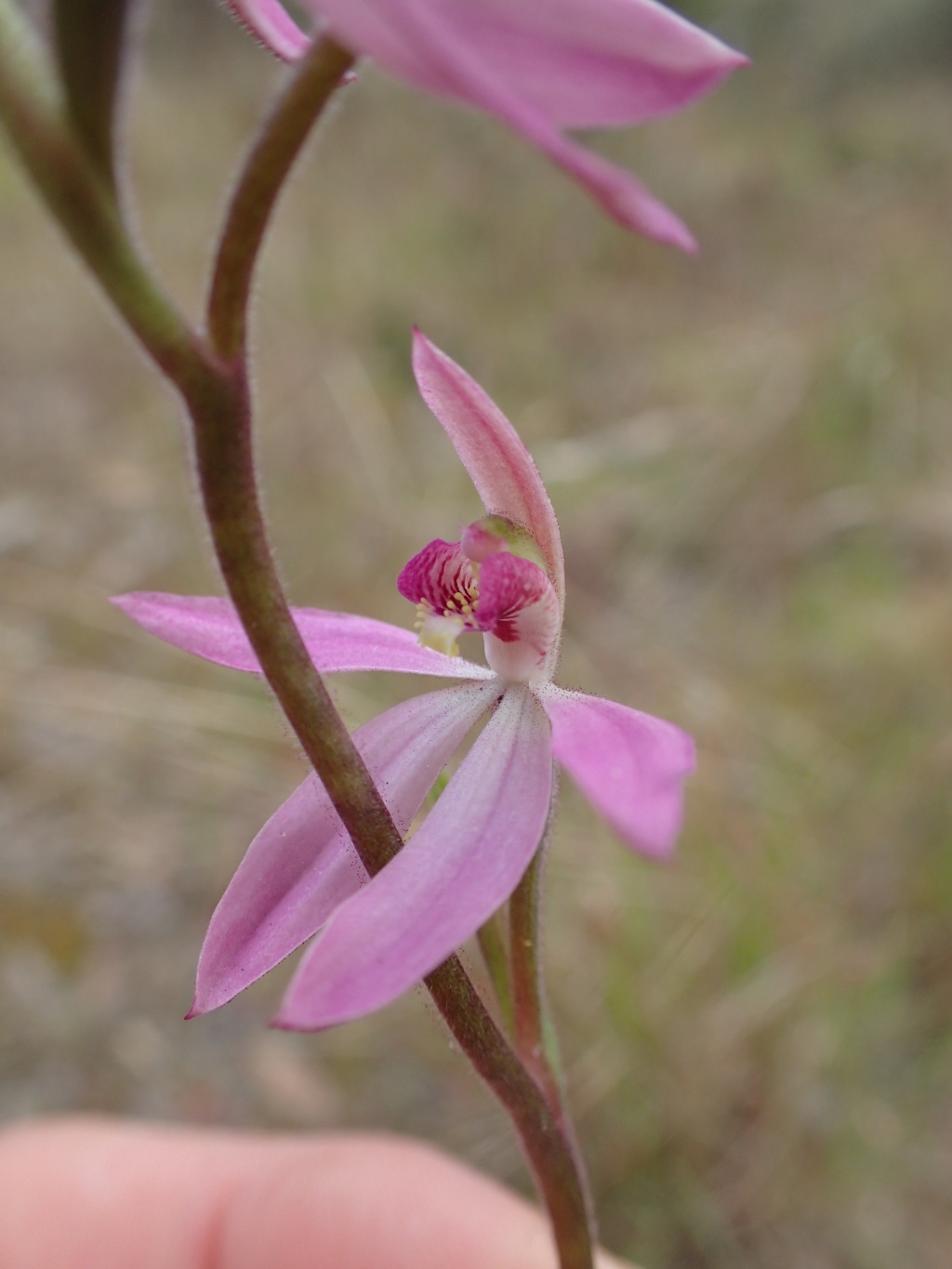Caladenia vulgaris
D.L.JonesFlowering plant very slender, 15–36 cm tall. Leaf linear, 15–27 cm long, usually subequal to the flowering stem, 2–3 mm wide, reddish at base. Flowers 1 or 2, dull pink, externally with brownish central band, often only partly opening; ovary c. 7–8 mm long; perianth segments 10–18 mm long, glandular outside, with obtuse tips; dorsal sepal obliquely erect, incurved, linear-oblanceolate, 2–4 mm wide; lateral sepals directed outward and forward, parallel to slightly spreading, fused at base, asymmetrically lanceolate, 3–6 mm wide; petals spreading, asymmetrically ovate-lanceolate, 3–5 mm wide. Labellum sessile, 3-lobed, 5–7 mm long, 5.5–7.5 mm wide (when flattened), white or pink, with narrow red transverse bars; lateral lobes prominent, broad, margins entire; mid-lobe small, recurved in distal half, triangular, slightly shorter (when straightened) than lateral lobes, margins with c. 5 pairs of calli, the basal ones stalked, tip of labellum yellow; lamina calli in 2 rows almost to base of mid-lobe (sometimes in 4 rows at base of labellum), stalked and clubbed, yellow or orange. Column incurved, narrowly winged, whitish green barred with dark-red; anther with prominent short point. Flowers Oct.–Jan.
Wim, GleP, VVP, GipP, OtP, WaP, Gold, CVU, GGr, DunT, EGL, HSF, HNF, OtR. Also SA (south-eastern corner), Tas. Scattered across southern Victoria where sometimes locally common in heathland and coastal scrub on moisture-retentive sandy soils.
Caladenia vulgaris differs from C. carnea in having a tall slender flowering stem, a long leaf that almost reaches the flowers, and relatively small (to c. 12 mm across) dull pink, partially opening flowers. The lateral sepals on C. vulgaris are often fused at the base and it tends to flower later than C. carnea. See also notes under C. prolata.
Entwisle, T.J. (1994). Orchidaceae. In: Walsh, N.G.; Entwisle, T.J., Flora of Victoria Vol. 2, Ferns and Allied Plants, Conifers and Monocotyledons, pp. 740–901. Inkata Press, Melbourne.
 Spinning
Spinning

